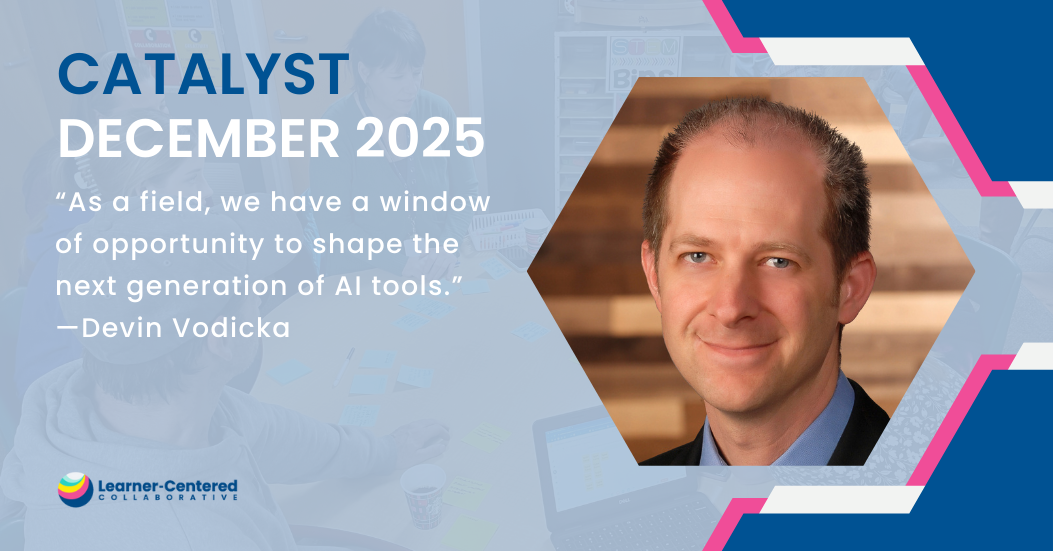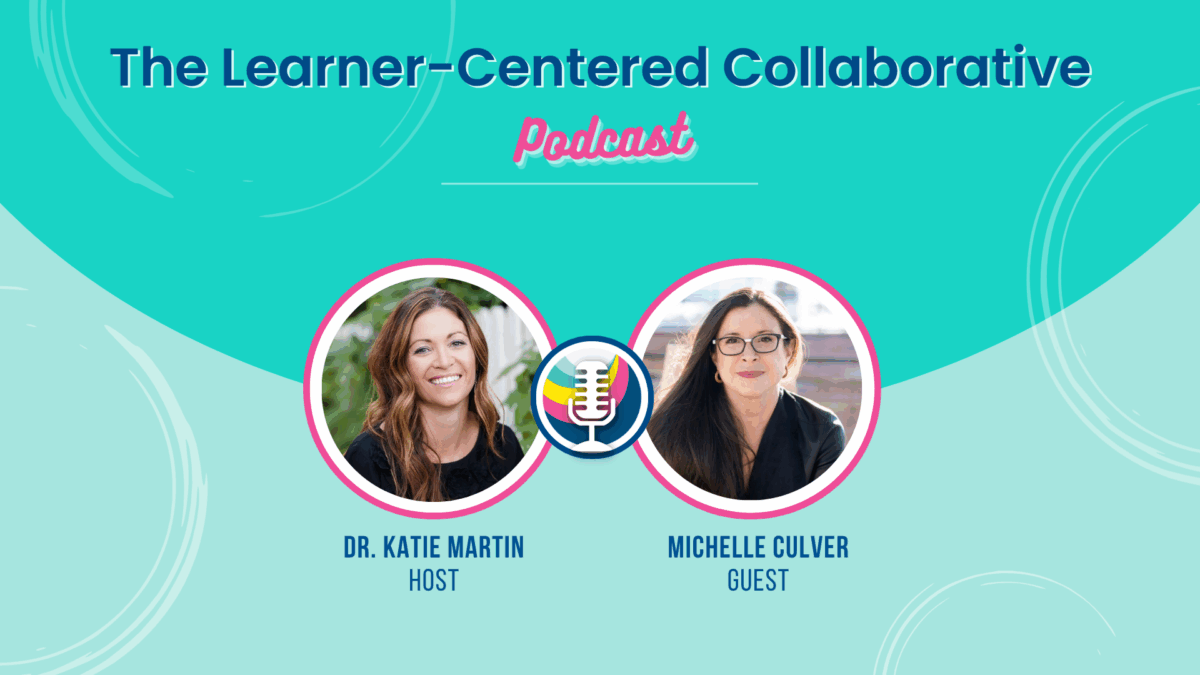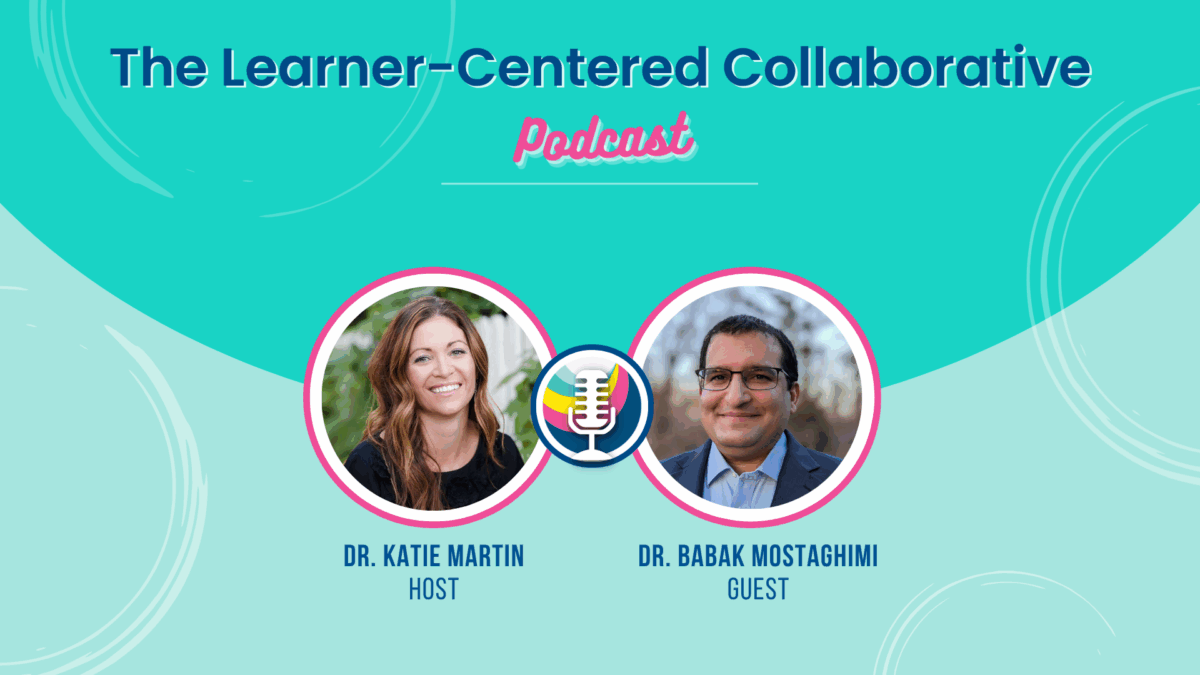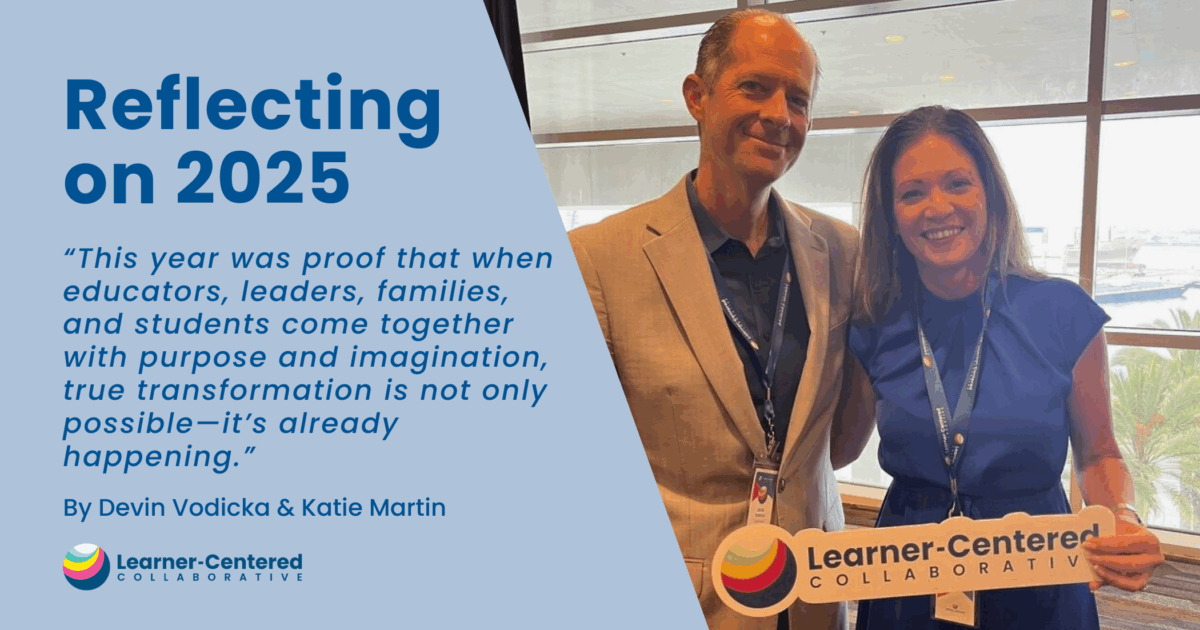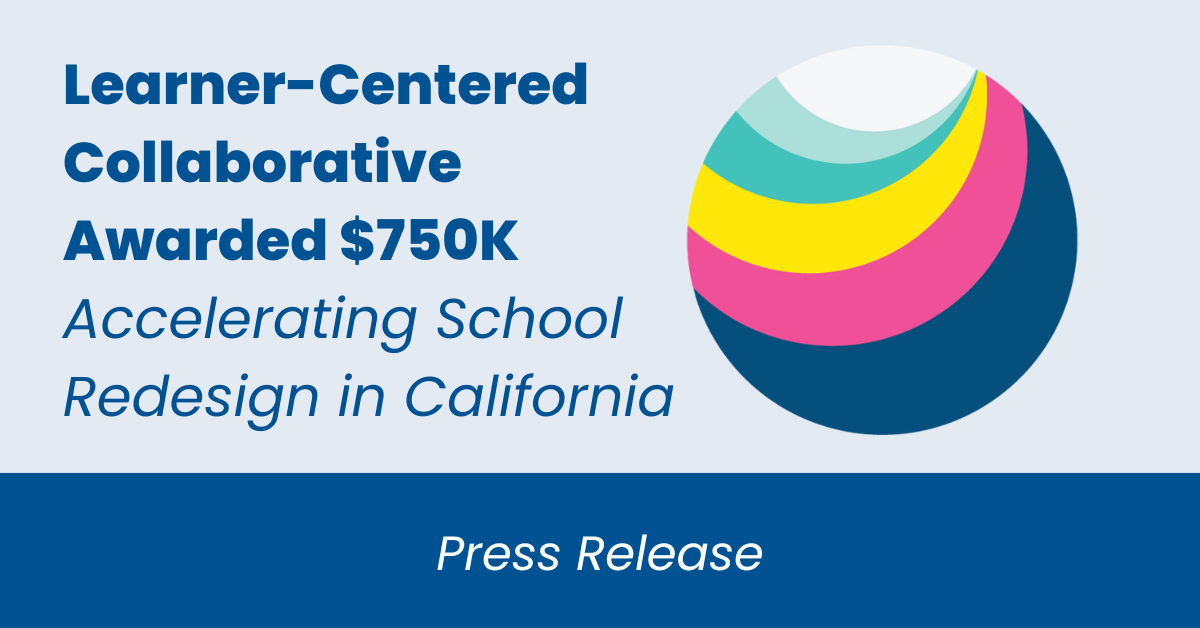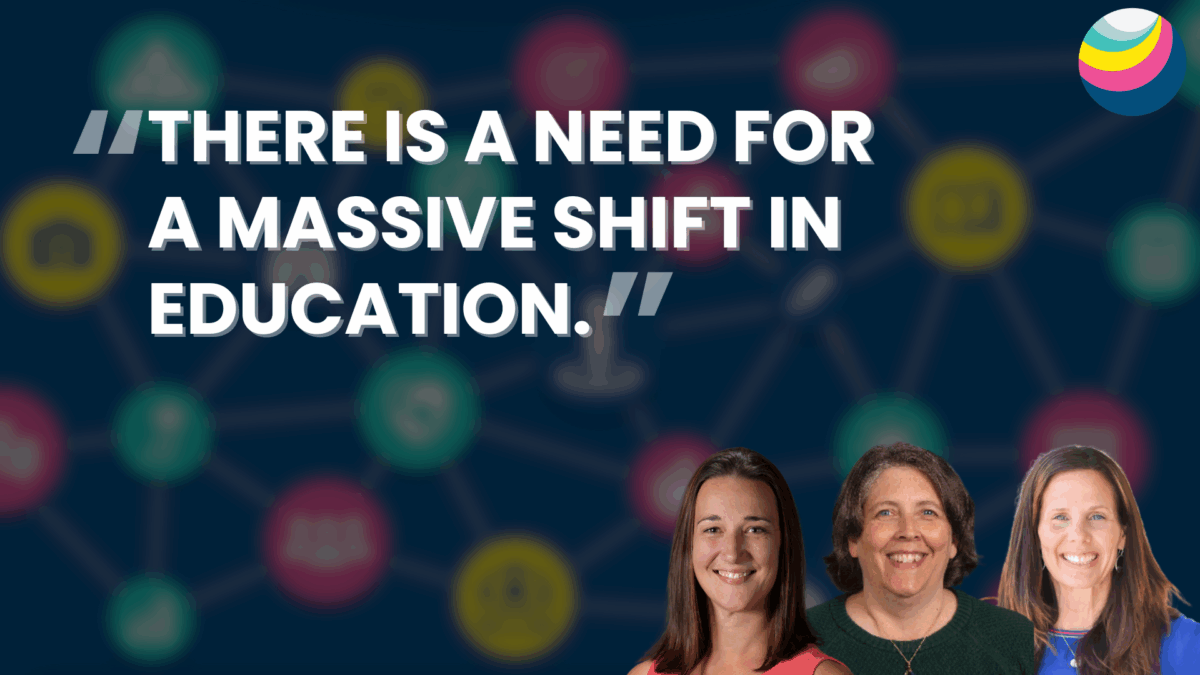Discovering AI Together: Lessons from a Learner-Centered Classroom
Guest blog post by Carissa Solomon
Carissa Solomon is a Senior Lead Educator at Embark Education in Denver, CO.

Today, AI seems to be part of almost every conversation in education. Some people are excited by its possibilities, while others are anxious that it may usher in more cheating. Do you know what’s missing from the conversation? The opinions and experiences of learners themselves. As young people are almost always the first and best adopters of new technology, it seems ridiculous that they haven’t been included.
As I started to think about AI more deeply this year, I engaged in a tried-and-true learner-centered move. I designed a learning experience where learners and I could investigate AI and build new knowledge together. Rather than requiring learners to wait until adults vet AI chatbots or penalizing them for using it alone, we did the work together. I guided their explorations to ensure they were safe and productive while learners provided the curiosity and perspective to explore AI in new and unique ways. Best of all, this wasn’t a shocking change of pace for learners, as we get to engage in such authentic learning almost every day in Embark Education’s learner-centered environment. Here’s what we discovered together.
Exploring AI’s Limitations
The first step was to destigmatize the use of AI at school. Learners had already been experimenting with ChatGPT but doing so secretly because they thought it was forbidden. So, we brought AI use into the light by engaging with it together. We spent hours asking ChatGPT to complete all kinds of tasks for us and honestly evaluating the results. Here’s a quick breakdown of what the learners discovered.
- ChatGPT can write a multi-paragraph essay on almost any topic in a few moments, but its information is generic. As a 7th grade learner wrote, AI “does not provide examples, and examples are key in writing.”
- ChatGPT cannot cite its sources. This made learners realize that ChatGPT can’t write an entire essay for them, as they must always cite their sources.
- A wise 8th grader brought up a further challenge presented by ChatGPT’s lack of sources, “you also can’t check to see if it is biased information because it won’t cite its sources.”
- The free version of ChatGPT only has access to information published before January 2022. One 7th grader found this particularly frustrating because it meant that ChatGPT didn’t incorporate the Denver Nuggets as the 2023 NBA Champions into an informative essay about the team—rude!
- If ChatGPT cannot find enough relevant information to answer a question, it “hallucinates” or makes stuff up. For example, when a 6th grader prompted it to detail her fantastic dancing abilities, it claimed she had an “unwavering dedication and passion for the art form” even though she had never taken a dance class.
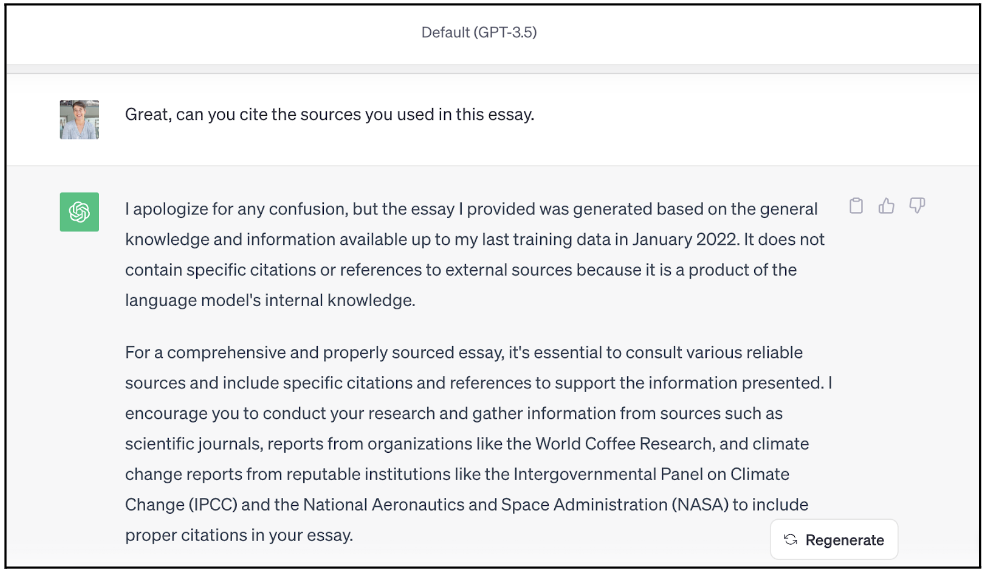
Having discovered that ChatGPT couldn’t do their work for them, learners were ready to give up on the tech altogether. I quickly stepped in to remind them that the real lesson isn’t to avoid AI but to learn to use it effectively. The next step in our exploration was clear – how can we best use AI to support learning?
Discovering AI’s Uses
Like any tool, AI chatbots’ output is only as good as the input it is provided. So, we needed to understand how to provide good initial input. We referenced a great Prompt Framework for Students created by AI for Education which directs learners to use The Five “S” Model.
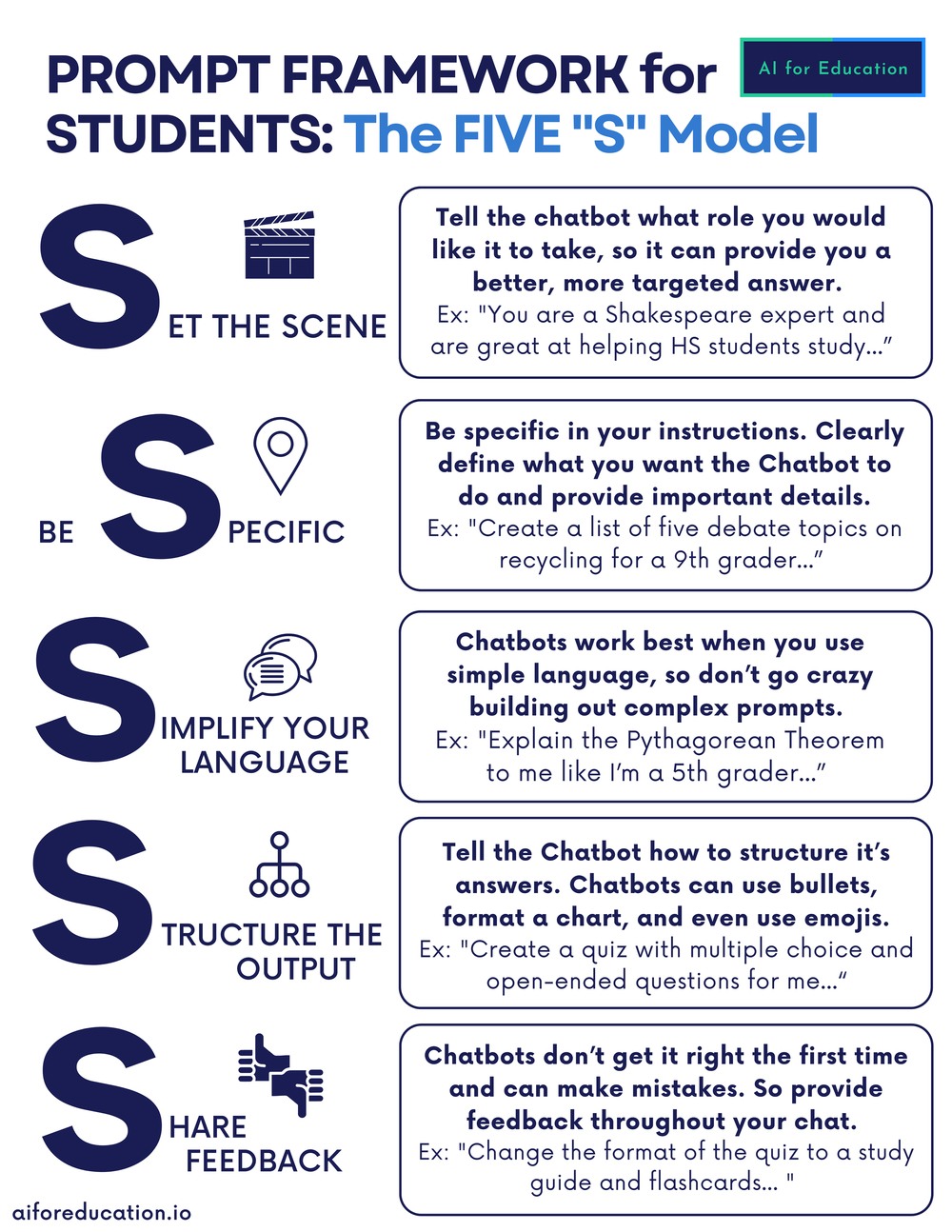
With this baseline in mind, I asked learners to experiment with ChatGPT independently. They were instructed to start with a general prompt and gradually add details to see how dialed in they could get ChatGPT’s responses. Here are some of the great uses they discovered for ChatGPT.
- Holding Conversations: One 8th grader explored ChatGPT’s conversational abilities – holding conversations in English, Spanish, Morse code, and even a letter-number cipher.
- Drafting Short Stories: A 7th grader discovered that “ it is especially good when making fiction stories because it doesn’t need real-life facts to make those up.” He used it to write personalized short stories for his friends as presents!
- Building an Essay Outline: Many learners reflected that ChatGPT could be a good first step in building an essay outline. They talked about the paralysis they feel when faced with a blank page and how getting some initial ideas from AI could help them have something to build from.
- Help Understanding Difficult Concepts: A 6h grader asked ChatGPT to explain confusing or challenging concepts in simpler language. “You can ask ChatGPT to explain a concept you are trying to learn. This could be useful if a teacher is unavailable or the way the teacher explained it to you does not make sense.”
- Copy Editing: A 7th grader found that AI chatbots can help you “if you need to improve your paragraph or essay. You can easily tell the AI to find run-on sentences, grammar, etc. in your essay.”
In the end, learners paired their understanding of ChatGPT’s limitations with a newfound view of its uses. And, because I also approached our work from a learning mindset, learners weren’t afraid of getting things wrong or making mistakes. I cannot begin to explain the power that results from this co-creation of new knowledge. Learners gleefully reported everything they discovered.
- The weird, “AI won’t teach me how to pick a lock!”
- The practical, “It provides better grammar support than Grammarly,” and
- The unexpected, “It won’t respond to more than 40 inputs in an hour!
A reaction that practically defines curious learners using a growth mindset to solve real-world challenges.
Fostering a Safe Environment for AI Exploration
Exploring AI chatbots like ChatGPT alongside learners in a safe, trusted space encourages authentic learning and deeper understanding. This learner-centered approach ensures guided, safe, and productive explorations while benefiting from learners’ unique perspectives and curiosity.
Ultimately, their work resulted in learner-created AI norms at Embark:
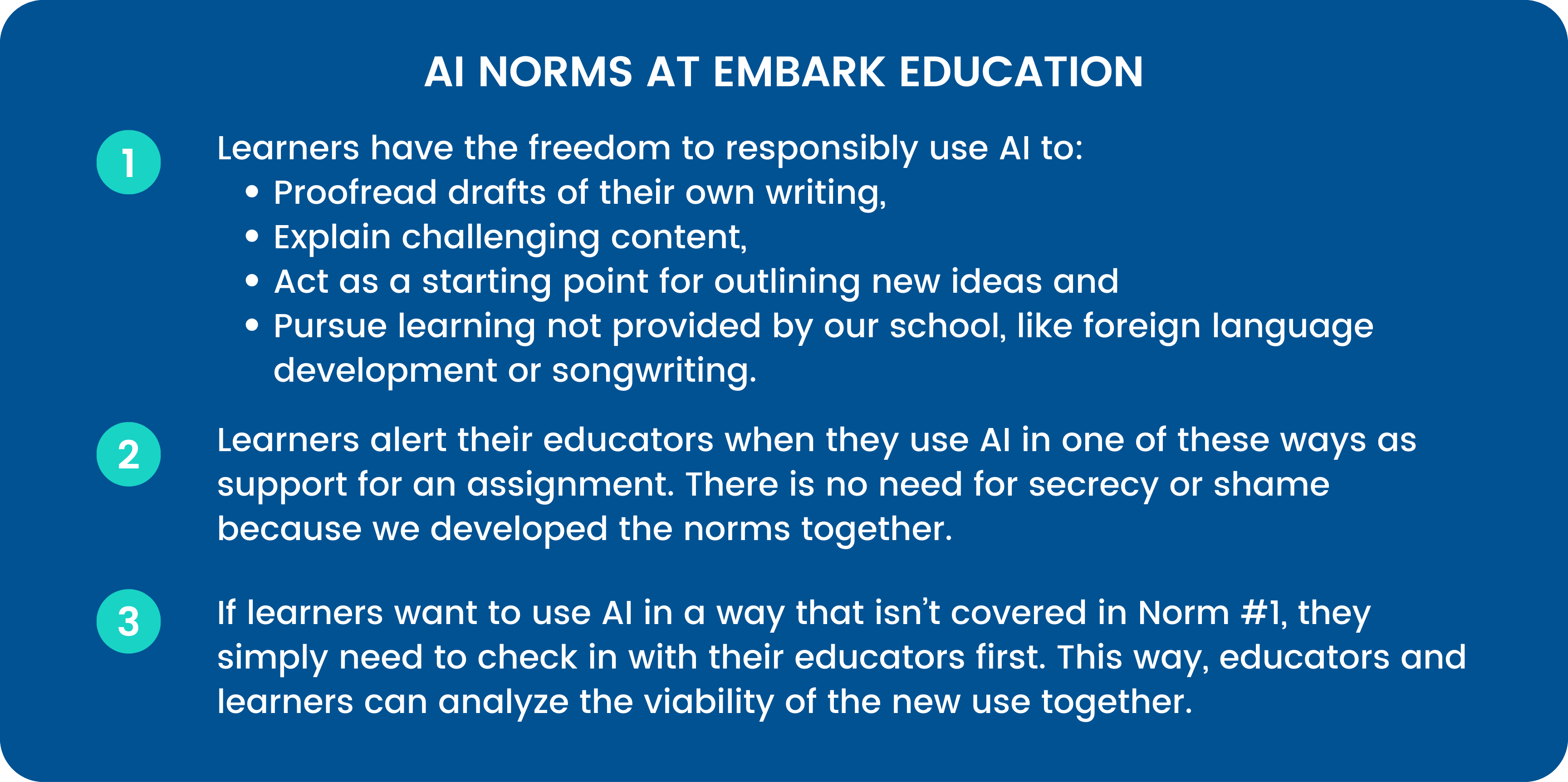
As educators, we must embrace this collaborative learning process to investigate AI’s limitations and potential uses in education, empowering learners to develop the skills and mindset necessary to confidently navigate the challenges and opportunities of an increasingly technology-driven world.
Ready to dive deeper into learner-centered AI education? Check out our self-paced Learner-Centered AI course and start your journey today!
This blog post was adapted by Carissa from her blog series at Embark Education. To read the full blog series and explore Embark Education’s approach to AI in education, visit their website here.
